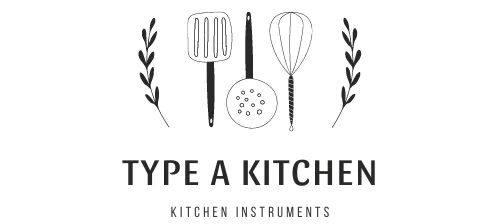Introduction:
The kitchen sink is an essential part of every household. It’s a place where we wash our dishes, clean our hands, and often store cleaning supplies. However, it can quickly become a cluttered mess that seems impossible to organize. That’s why it’s important to take the time to declutter and reorganize the space underneath your kitchen sink.
Whether you have a small or large kitchen, organizing the space underneath your sink can make all the difference in creating an efficient and functional workspace. By following these tips and strategies on how to organize underneath your kitchen sink, you can maximize storage space and keep everything easily accessible.
Overview of How to organize underneath the kitchen sink
When it comes to organizing your kitchen, one area that often gets overlooked is the space underneath the sink. This area can quickly become a catch-all for cleaning supplies, dish soap, and other miscellaneous items. However, with a little bit of effort and some clever organization techniques, you can transform this space into a functional and efficient storage area.
The first step in organizing underneath your kitchen sink is to declutter. Take everything out and sort through it all, getting rid of anything that is expired or no longer needed. Next, invest in some storage solutions, such as bins or baskets, that can help you maximize the available space. Utilize vertical space by adding hooks or racks on the inside of cabinet doors to hang cleaning tools like brooms and mops.
10 ways How to organize underneath the kitchen sink
1. Clear Out Clutter:
If you have too much stuff under your kitchen sink, chances are good that it’s difficult to find what you need when you need it. Take everything out and sort through it all, getting rid of anything that is expired or no longer needed.
Next, invest in some storage solutions, such as bins or baskets, that can help you maximize the available space. Utilize vertical space by adding hooks or racks on the inside of cabinet doors to hang cleaning tools like brooms and mops.
2. Use Stackable Bins or Baskets:
Stackable bins or baskets can help you utilize space in cabinets with multiple shelves. For example, if your cabinet has five shelves, one shelf might hold three large storage bins while the next shelf holds two smaller ones. You can also use stackable bins or baskets to hold things like cleaning supplies, pet food, and other items with a narrow profile.
3. Install Tension Rods:
Tension rods are a great way to hang flat items like dish towels, dishtowels, or pot holders, and they can help you utilize space in cabinets with multiple shelves. Tension rods also come in handy when you need to store long items like brooms or mops.
Tension rods are a great way to hang flat items like dish towels, dishtowels, or pot holders, and they can help you utilize space in cabinets with multiple shelves. Tension rods also come in handy when you need to store long items like brooms or mops.
4. Utilize Hooks:
Hooks are great for hanging items on cabinets that have deep shelves. Use hooks to hang small appliances, pots and pans, or other kitchen items that can be hung. Hooks are also great for storing items outside of the kitchen in areas like entryways or mudrooms. Hooks are great for hanging items on cabinets that have deep shelves. Use hooks to hang small appliances, pots and pans, or other kitchen items that can be hung.
5. Add Shelf Risers:
Shelf risers are a simple way to store items underneath shelves or cabinets. They can be used to hold items like small appliances, pots and pans, or other kitchen items. They can also be used to store items outside of the kitchen in areas like entryways or mudrooms.
6. Use Clear Storage Containers:
Clear storage containers are a great way to store items in the kitchen. They can be placed on shelves, under cabinets, or in drawers. For items like appliances and cookware, clear storage containers can help make items more visible, which can help with organization. When storing items like pots and pans, try to keep them in the same spot. This will help you quickly find a specific item when you need it.
7. Utilize a Tilt-Out Tray:
A tilt-out tray is a great way to store items like pots and pans. They can be placed under cabinets, on shelves, or in drawers. They’re easy to install, and they look great! Storing items like this can help keep the kitchen looking clean and organized.
Make a plan for the room you want to organize. Determine what needs to be done, and put a plan in place. Start with the most useful or used items first. Put everything back where it belongs. Keep everything in its place so it’s easy to find when needed.
8. Keep Cleaning Supplies Separate:
When cleaning supplies are stored in the same place as other items, it can be easy to forget to put them away when they are no longer needed. Cleaning supplies should be kept in their own containers, so that they can be easily identified, and put back where they belong.
When it comes to organizing your kitchen, there are several different things you can do. Start by thinking about how you really use the space. You should clean out all the unnecessary items, and consider using drawer organizers to help keep everything organized.
9. Add a Trash Bin:
If you have a single garbage can, it is easy to leave trash around the house. This will make your kitchen less clean and more cluttered. Instead, get another garbage bin and put it in the kitchen, where you are most likely to throw away waste.
This will help keep your kitchen cleaner. If you have a single garbage can, it is easy to leave trash around the house. This will make your kitchen less clean and more cluttered. Instead, get another garbage bin and put it in the kitchen, where you are most likely to throw away waste.
10. Label and Maintain:
If you organize your kitchen and keep it clean, you’ll never have to worry about getting lost in clutter. However, if you can’t find something, or if things are not where they should be, then keeping your kitchen organized is useless.
Labeling bins and cabinets is a great way to keep your kitchen organized. Plus, by labeling different bins, you’ll know what goes in them so you don’t have to dig through the entire cabinet every time you need something. As for labeling cabinets, you may want to consider color-coding based on their contents. This way, you can easily find what you’re looking for.
If you organize your kitchen and keep it clean, you’ll never have to worry about getting lost in clutter.
Now that you know what types of products are available, it’s time to get started! You’ll need to make a plan for the kitchen or other room you want to organize.
Conclusion:
Organizing underneath your kitchen sink may seem daunting at first, but with these simple steps, it can be a manageable task. Start by taking everything out and assessing what you really need to keep. Then, utilize storage solutions such as baskets, shelves, and hooks to maximize the space you have available. Labeling items and keeping them in designated areas will also help maintain organization over time.
By following these tips and making a habit of regularly decluttering and reorganizing, you’ll be able to keep your kitchen sink area clean and functional for years to come. So why not take a few minutes today to tackle this often-overlooked area of your kitchen?


